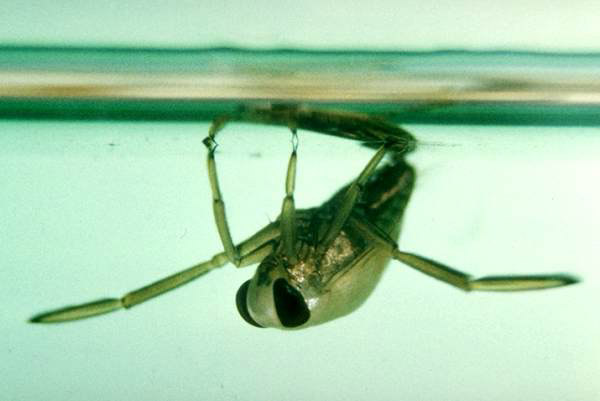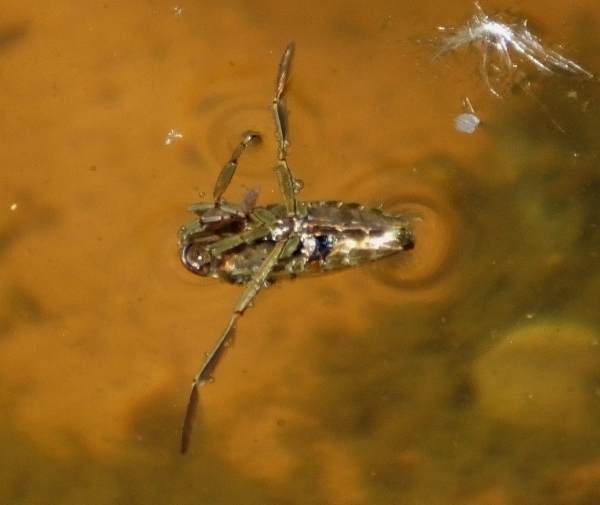Notonecta species - Backswimmer or Greater Waterboatman
Phylum: Arthropoda - Class: Insecta - Order: Hemiptera - Family: Corixidae

Unlike the various kinds of Lesser Waterboatman, Corixa species, members of the Notonecta genus swim along the surface on their backs, using their hair-fringed long hindlegs, and they can dive to capture and feed upon smaller creatures. The common name Backswimmer is therefore both descriptive and an aid to identification. These insects are typically 1.3 to 1.6cm in length. (Females are slightly larger than males.) Be carefull if you handle these insects, because they can give fingers a very painful nip.

Habitat
Still or slow-flowing water, or quiet backwaters on faster streams and rivers, are the preferred habitat of this carnivorous water bug.
In Britain and Ireland there are four species in the Notonecta genus; all are commonly referred to as Backswimmers. Separation of these species is fairly straightforward based upon the colour and patterning of the elytra (the wing covers).
Excited at the prospect of flyfishing? So are we, and we're pretty sure you would find the Winding River Mystery trilogy of action-packed thrillers gripping reading too. Dead Drift, Dead Cert, and Dead End are Pat O'Reilly's latest river-and-flyfishing based novels, and now they are available in ebook format. Full details on our website here...
Buy each book for just £4.96 on Amazon...
Please Help Us: If you have found this information interesting and useful, please consider helping to keep First Nature online by making a small donation towards the web hosting and internet costs.
Any donations over and above the essential running costs will help support the conservation work of Plantlife, the Rivers Trust and charitable botanic gardens - as do author royalties and publisher proceeds from books by Pat and Sue.
